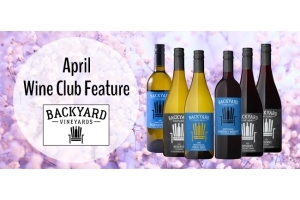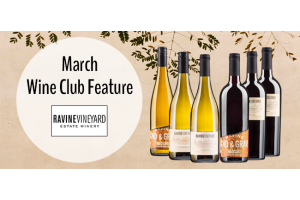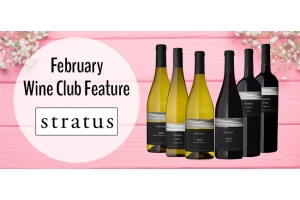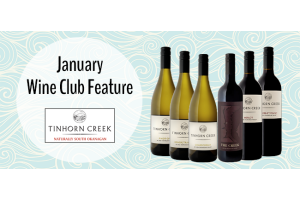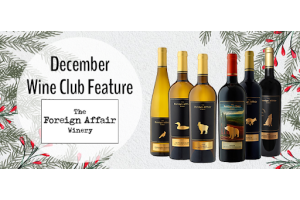Canadian Whites, Aged
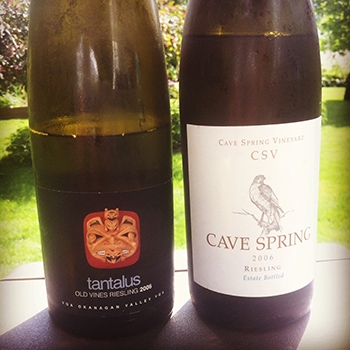
The vast majority of all wine, over 95% according to most guesswork, was created to be drunk within months of the bottle leaving the winery. With a little age in white wine, the fruit characters soften and eventually dull. Oxygen slowly wears through vivacity, savoury flavours develop, your glass might smell like bruised apples, caramel, or mulled wine.
While I prefer my everyday wines youthful, some of the best whites I've had were aged for a decade or three: Dauvissat Chablis, Comtes Lafon Meursault, R. Lopez de Heredia's Gran Reserva Rioja, Hunter Valley Semillon from Tyrrell's and Brokenwood. What do all of these wines have in common? Acid (plenty of it), none of them would be described as fruity, and the majority would be unpleasantly lean if drunk young. In The Oxford Companion to Wine, Jancis Robinson writes, that while much is still unknown about how wines age, "In general, the lower a wine's pH, the longer it is capable of evolving."
So what whites are made in Canada that could age for ten years and still be enjoyable? Based on international examples, I would bet on high-acid, mineral-driven Chardonnay, Chenin Blanc, Semillon, and Riesling.
Riesling is something Canada does well and its penchant for aging is legendary. The acid is often searing. It can take on honeyed flavours and toasty brioche notes despite never seeing the inside of a barrel. It can also develop a complex aroma that some refer to as 'petrol' and others euphemize with 'marmalade'. I associate it with chainsaw exhaust, but I grew up in a place where I was probably exposed to too much chainsaw exhaust. Regardless of what you call it, it's a distinct, spicy aroma that you won’t find in any other grape.
I decided to open two Canadian Rieslings with nearly eight years of age from the same cellar and check their vitals. One was British Columbia’s Tantalus 2006 Old Vines and the other was Ontario’s Cave Spring 2006 CSV.
These are really cool wines to compare. The vineyards are almost the same age—the Tantalus block was planted in 1978 on deep, silty soils southeast of Kelowna. The Cave Spring CSV block was planted between 1974 and 1978 on the limestone soils of the Beamsville Bench. The pH's are low and nearly identical (2.95 in the Tantalus vs. 2.93 in the Cave Spring). The total acidity levels are in the same neighbourhood (10.8 g/l for Tantalus vs 8.7 g/l for Cave Spring). Where the technical points of these wines differ are in sweetness levels and how the bottles are sealed. The Tantalus Riesling is more dry, (9.3 g/l vs 19 g/l of sugar) and under screw cap, where Cave Spring is under cork, bringing an expectation of more oxygen exchange.
While at different stages in evolution, both wines are quite delicious. The Cave Spring has likely peaked or is peaking, while the Tantalus will keep developing.
The Tantalus Old Vines is surprisingly youthful and its colour is still pale. The petrol character I mentioned is obvious, with honey and lime curd. This wine is in no hurry to age—it is very bright and fresh. It has perhaps fleshed out a little and gained complexities, while the acid continues to linger.
The Cave Spring CSV is visually more developed; the wine has taken on a golden peachy hue. It smells like honey and white flowers with apricot and chalky flavours. There is a little sweetness present, but still generous acidity to balance it.
If you’re interested in ageing whites as well, here are some others (available right here on My Wine Canada), which I think would be fun to cellar for a good eight to 10 years:
Tantalus Riesling, 13th Street Winery '13th Street Vineyard' Riesling, CedarCreek Riesling, JoieFarm Riesling and their "En Famille" Reserve Chardonnay, Meyer Tribute Series Chardonnay, Mt. Boucherie Semillon.
Jake Skakun is a writer and sommelier from Vancouver, currently living in Toronto. He can be found most days pulling corks and twisting caps at the Black Hoof. He Tweets and Instagrams @jakeskakun.

